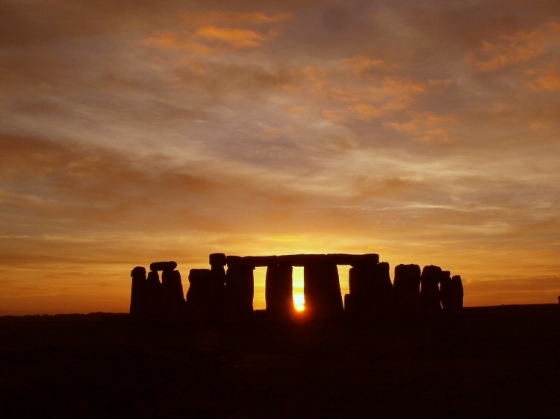One enduring hypothesis for Stonehenge’s purpose comes from the initial observation, first made by 18th-century scholars, that the monument’s entrance faces the rising sun on the day of the summer solstice. For many, this orientation suggests that ancient astronomers may have used Stonehenge as a kind of solar calendar to track the movement of the sun and moon and mark the changing seasons. This solstice occurs at the instant the sun reaches its most northerly point on the celestial sphere, the imaginary sphere of stars surrounding Earth. If you stood inside the Stonehenge monument on the day of the northern summer solstice, facing north-east through the entrance towards a rough hewn stone outside the circle – known as the Heel Stone – you would see the sun rise above the Heel Stone, as illustrated in the image below.
The north-eastern entrance was widened at this time, with the result that it precisely matched the direction of the midsummer sunrise and midwinter sunset of the period. 
The timber circle was oriented towards the rising sun on the midwinter solstice, opposing the solar alignments at Stonehenge, whilst the avenue was aligned with the setting sun on the summer solstice and led from the river to the timber circle. Evidence of huge fires on the banks of the Avon between the two avenues also suggests that both circles were linked, and they were perhaps used as a procession route on the longest and shortest days of the year. Parker Pearson speculates that the wooden circle at Durrington Walls was the centre of a ‘land of the living’, whilst the stone circle represented a ‘land of the dead’, with the Avon serving as a journey between the two